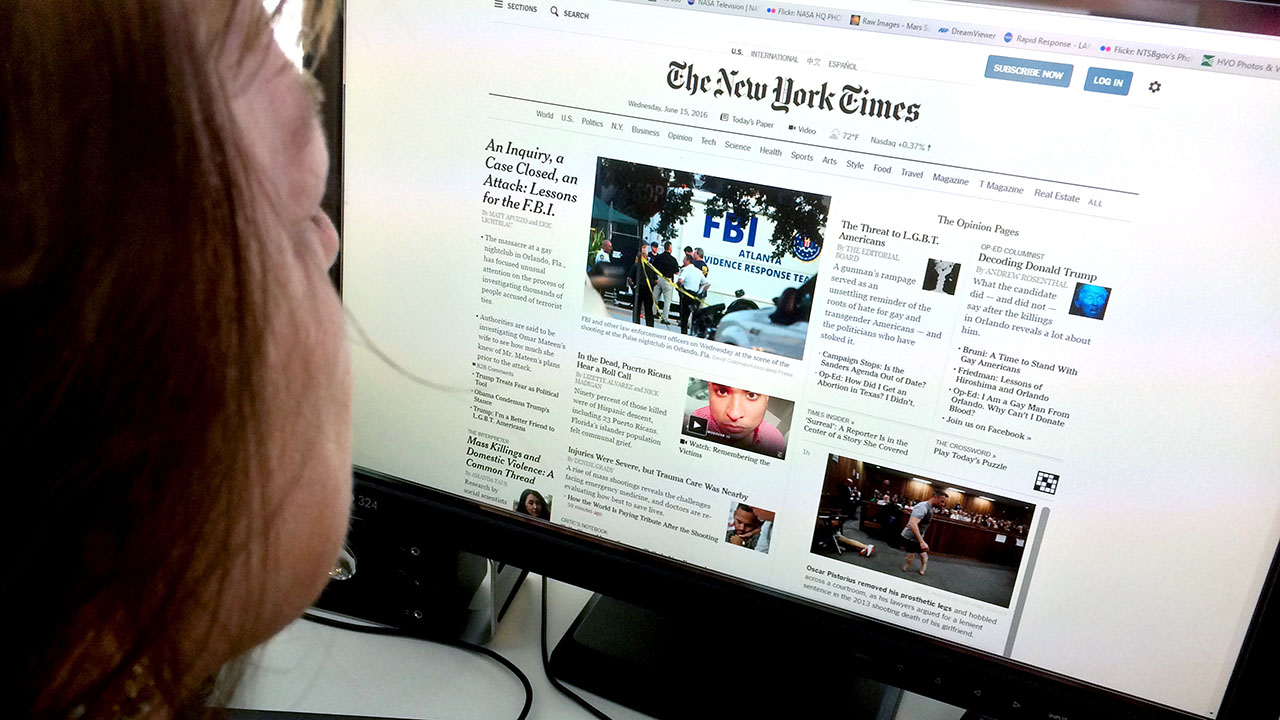How Popular News can Save You Time, Stress, and Money.
How Popular News can Save You Time, Stress, and Money.
Blog Article
Popular News Can Be Fun For Everyone
Table of ContentsPopular News - An OverviewPopular News Fundamentals ExplainedThe Popular News PDFsThe 6-Second Trick For Popular News
Age is additionally a variable in the method people see the role of social networks. Younger social media information customers are more probable to state it has actually affected their discovering right. Concerning fifty percent of social networks news customers ages 18 to 29 (48%) claim news on social media makes them far better notified, compared with 37% of those 30 to 49, 28% of those 50 to 64, and 27% of those 65 and older.Journalists consider news values when establishing whether or not to cover an event or news. Right here are the values that we take into consideration when establishing an outreach technique. Perhaps one of the most essential component of newsworthiness is whether the news product being communicated influences a news electrical outlet's audience. As an example, allow's picture scientists have located an economical service to an usual problem.
Study on a state's brand-new tax obligation code likely won't generate the same interest across state borders. Occasionally experts can help localize a larger nationwide tale that influences even more than simply a city or state.
If you are releasing newsworthy research study, loop in MarComm prior to the article being published so that the pitch can emphasize the newest aspect of the story: the publication of the study. Occasions and news that entail prominent figures are most likely to generate media coverage. Visits from nationwide numbers commonly need months of preparation due to anticipated area passion.
Things about Popular News
We can help reduce possible reputational risk with these stories while likewise raising the odds of producing insurance coverage. While many of the above news values are intertwined, human passion stories frequently stand apart.
Human passion components can add news value to various other tales that could appear to be lacking in the other values. The novelty or anomaly of a situation can help influence whether an information electrical outlet is most likely to cover a story. While this is not an exhaustive listing, examining to see if your information thing or occasion has these qualities before contacting us will help you identify which elements hold the most news value.
The study finds that slightly over half of all U.S. adults sign up for news in some formand approximately half of those to a newspaper. And in contrast to the idea that youngsters will certainly not spend for information due to the fact that details on the net is cost-free, virtually 4 in 10 grownups under age 35 are paying for news.
There is also significant proof that even more consumers could begin to spend for information in the futureif publishers can understand them and serve them well. Fifty percent of those that do not pay for news proactively choose news and resemble customers in various means. And virtually 2 in 10 of those that don't subscribe to information now indicate they are inclined to start to pay in the future.
7 Easy Facts About Popular News Explained

People are drawn to information as a whole for 2 factors over others: A need to be informed people (newspaper clients in certain are very inspired by this) and since the publication they sign up for excels at covering specific topics about which those customers particularly care - Popular News. While there are a host of factors, the No
Greater than 4 in 10 likewise cite the truth that family and friends register for the very same product. Greater than a third of individuals say they originally subscribed in response to a discount or promotion. In print, people additionally are moved heavily to subscribe to get promo codes that save them money, something that has untapped effects in electronic.

Excitement About Popular News
We asked everybody who informed us they have a routine totally free resource of news how most likely they would be to spend for it. Greater than a quarter (26 percent) claim they would go to least rather likely to start paying for itand 10 percent are really or very likely. These likely payers tend to be news seekers, and they likewise tend to be people that already spend for a news membership along with the source they adhere to totally free.
Of those that do pay, 54 percent subscribe to papers in print or digitally, which stands for 29 percent of Americans in general. The majority of them buy a print magazine in addition to their newspaper and pay for 2 to 4 news resources in total amount, some much more. And while 53 percent are veteran clients (5+ years), greater than a quarter (27 percent) have acquired their paper subscription within the past year.

Report this page